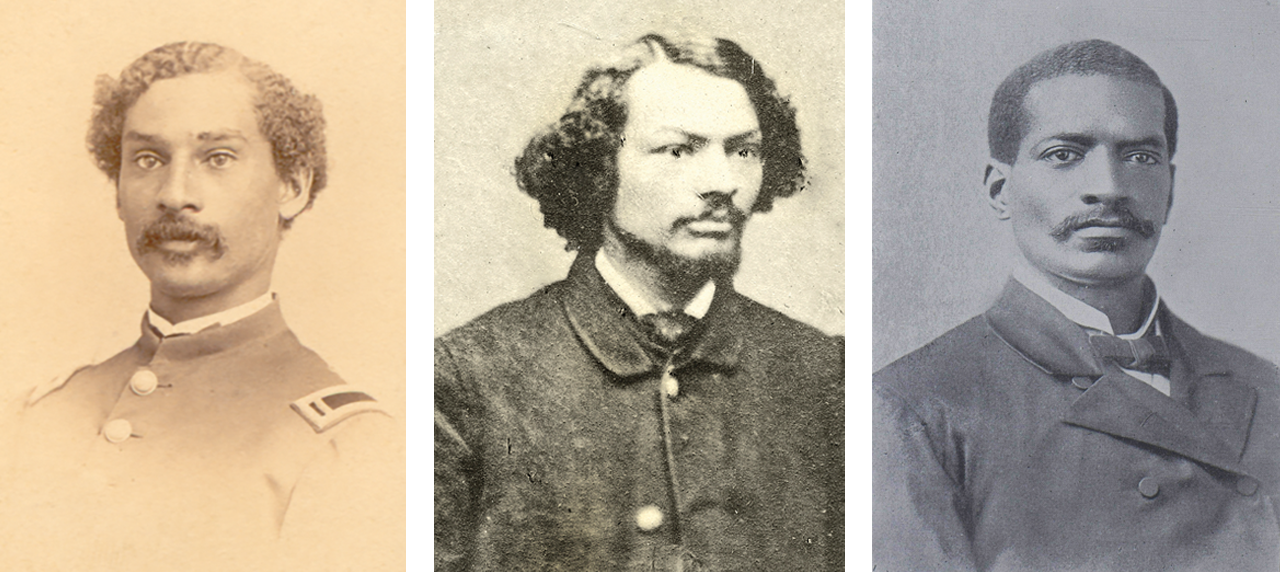Editor’s note: The following is the second of two “From the Archives” articles regarding the Buxton Mission School and its surgeon graduates. The first article ran in the March 2022 issue of the Bulletin.
A 19th century example of an educational “pipeline” that directed promising Black students toward careers in medicine was the Buxton Mission School. Founded in 1846 in western Ontario, the school educated the children of enslaved Blacks from the American South who arrived by way of the Underground Railroad.1 Four of its six students in Buxton’s inaugural class of 1850 became physicians, of whom three served as surgeons to the Union Army in the Civil War.*2 The founding of the school was described in Part 1 of this series.
Anderson R. Abbott, MD
The parents of Anderson Abbott, MD, emigrated from Alabama to western Ontario in 1835, where their children were free to learn to read and write, a right denied Blacks in the antebellum South. After studying at Buxton, Dr. Abbott attended colleges in Toronto and Ohio before receiving a degree in medicine from the Trinity Medical College, Toronto.3
Dr. Abbott received a commission in the Union Army in the Civil War. Assigned to the Contraband Hospital in Washington, DC, he later served as the executive officer of the facility.
In April 1865, Dr. Abbott was among the physicians attending President Lincoln after his assassination. He received one of Lincoln’s shawls from Mrs. Lincoln as a memento of his service to the President.4 In 1894, he was appointed surgeon-in-chief of Provident Hospital in Chicago, IL, succeeding its founder, Daniel Hale Williams, MD, FACS.2
Jerome R. Riley, MD
Born in 1840 in Detroit, MI, Dr. Riley was only 4 years old when his family moved to Canada, where he attended the Buxton Mission School. After passing the examination in medicine in 1861, he set up practice in western Ontario.5 Like Dr. Abbott, Dr. Riley joined the Union Army in 1864 as a member of the Contraband Hospital surgical staff.
After the war, he completed a formal degree in medicine in 1873 at Howard University, Washington, DC. He settled in Pine Bluff, AR, where he was the county physician and coroner. Unlike most Blacks in the South who were members of the Republican Party, Dr. Riley was an active Democrat, and served as a delegate to the state’s constitutional convention of 1874 that ushered the state’s re-entry into the Union.
John H. Rapier Jr., MD
Dr. Rapier was connected through his grandmother to John Catron, one of the seven Supreme Court Justices in the majority in the Dred Scott decision of 1857.2 Born in Florence, AL, Dr. Rapier and his two brothers were sent to Chatham to attend the Buxton Mission School.
He believed emigration was the only feasible route to liberty. Unable to get sponsorship to resettle in Liberia, he briefly looked to Nicaragua under William Walker, a soldier of fortune who was purportedly fighting for the freedom of its native people.2 He also tried Haiti and Jamaica but was unable to surmount cultural and language barriers and poverty even more dire than in the American South.
Dr. Rapier returned to the US, where he studied medicine, first at the University of Michigan, Ann Arbor, then at the College of Physicians and Surgeons of Keokuk, IA, where he received his degree in 1864. Degree in hand, Dr. Rapier received a position as a medical officer in the US Army and was assigned to the Contraband Hospital.2
Dr. Rapier died in Washington, DC, sometime in 1865 from unknown causes at age 30—a tragic illustration of an intelligent, energetic man frustrated at every turn by the racial strictures of American society.
Black Surgeons and Surgery in America is available for free download and hard copy for purchase at facs.org/publications/black-surgeons-and-surgery-in-america.



